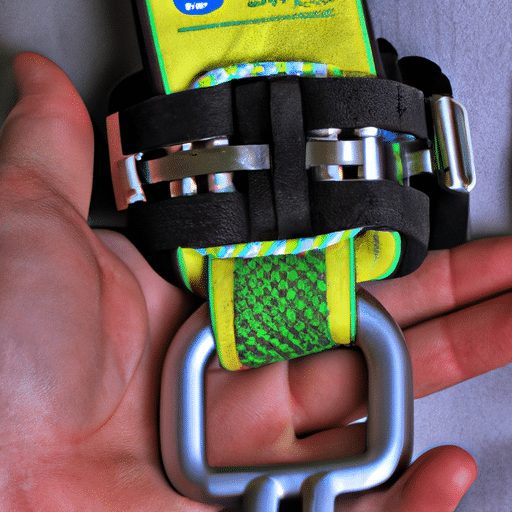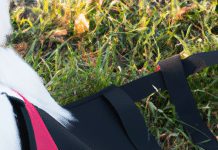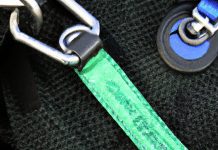Are you tired of being dragged around the neighborhood by your strong-willed furry friend? If so, you’re not alone. Many dog owners struggle with the issue of excessive pulling during walks. But fear not, there may be a solution that can turn your walks from a battle into a breeze. In this article, we will explore whether using a harness is a viable option for dogs that pull excessively. So, if you’re ready to regain control and enjoy peaceful strolls with your four-legged companion, keep reading!
Choosing the Right Harness
Choosing the right harness for your dog is crucial, especially if your furry friend tends to pull excessively during walks. With the wide array of harness options available, it’s important to understand the different types of harnesses and the features to look for in order to ensure your dog’s safety and comfort.
Table of Contents
Understanding the Different Types of Harnesses
There are several types of harnesses suitable for dogs that pull excessively. The most common ones include front-attachment harnesses, back-attachment harnesses, and head halters.
-
Front-attachment harnesses have a leash connection point located on the front of the dog’s chest. This design helps redirect the pulling force towards the side instead of directly against your dog’s forward momentum.
-
Back-attachment harnesses, on the other hand, have the leash attachment point located on the back of the harness. These harnesses are often used for dogs who have already learned not to pull excessively and need a less restrictive option.
-
Head halters are another option, resembling a muzzle that fits over your dog’s snout. They provide control by allowing you to gently redirect your dog’s attention and movement. It’s important to note that head halters should be properly fitted and used with caution, as they may not be suitable for all dogs.
Considerations for Dogs That Pull Excessively
If your dog is a strong puller, there are a few considerations to keep in mind when choosing a harness. Look for a harness that provides a secure and snug fit without restricting your dog’s movement. Adjustable straps and multiple attachment points can help distribute pressure more evenly and give you better control.
Additionally, consider the material and construction of the harness. Opt for a durable and comfortable harness that can withstand the pulling force while keeping your dog comfortable.
Features to Look for in a Harness for Pulling Dogs
When shopping for a harness for your pulling dog, there are a few important features to look for:
-
Padding and Comfort: Look for a harness with ample padding on the chest and straps to prevent chafing or rubbing. A comfortable harness will ensure that your dog is happy and willing to walk without discomfort.
-
Adjustability: Ensure that the harness has adjustable straps to provide a customized fit for your dog. A proper fit is essential for the harness to be effective in redirecting pulling behavior.
-
Reflective Elements: If you frequently walk your dog during low light conditions, consider choosing a harness with reflective elements. This extra visibility can enhance safety and make your dog more visible to passing vehicles and pedestrians.
-
Durability: Choose a harness made from high-quality and durable materials that can withstand the consistent pulling force. Look for reinforced stitching and sturdy hardware to ensure longevity.
-
Ease of Use: Opt for a harness that is easy to put on and take off. Quick-release buckles and adjustable straps make the harness more user-friendly and convenient for both you and your dog.
By considering these factors and selecting the right harness, you can make walks more enjoyable, safer, and more comfortable for both you and your furry friend.
Benefits of Using a Harness for Pulling Dogs
Using a harness instead of a collar for dogs that pull excessively provides various benefits. Let’s explore some of the key advantages:
Reduced Strain on the Dog’s Neck and Throat
When a dog pulls vigorously on a collar during walks, it can cause strain on their neck and throat. In contrast, harnesses distribute the pressure more evenly across the dog’s chest and body, reducing the risk of injury to their sensitive areas. By minimizing strain on the neck, harnesses provide a safer and more comfortable walking experience for your furry friend.
Improved Control and Steering
Harnesses offer better control and steering during walks, especially for strong and pulling dogs. The attachment point on the chest or back allows you to redirect your dog’s movement more effectively. With proper leash management and training, you can guide your dog’s behavior and prevent pulling without causing discomfort or harm.
Minimized Risk of Escaping or Slipping Out
For dogs who tend to back out of collars or slip their heads through them, harnesses are an excellent solution. The secure and snug fit of a harness makes it more difficult for dogs to escape, ensuring their safety while on walks. This added security can give you peace of mind and allow you to enjoy walks without worrying about your dog slipping away.
Common Mistakes to Avoid
While harnesses are a valuable tool for managing pulling behavior, there are some common mistakes that dog owners should avoid to ensure their effectiveness.
Selecting an Ill-Fitting Harness
One of the most crucial mistakes to avoid is choosing a harness that doesn’t fit your dog properly. A poorly fitted harness can be uncomfortable for your dog and may not effectively discourage pulling behavior. Take accurate measurements and consult the sizing guide provided by the manufacturer to ensure a snug and secure fit.
Using a Collar Instead of a Harness
Using a collar instead of a harness for a dog that pulls excessively can exacerbate the problem. Collars concentrate the pulling force on the neck, which can lead to discomfort, injuries, or even health issues. It’s important to choose a harness that offers a more comfortable and safer alternative.
Neglecting Proper Training Alongside Using a Harness
While a harness can help control pulling behavior, it is essential to combine it with proper training techniques. Using a harness alone does not guarantee that your dog will immediately stop pulling. Positive reinforcement training, desensitization, and counterconditioning techniques can help teach your dog to walk politely on a leash. By neglecting training, you may not see the desired results and may encounter setbacks in curbing the pulling behavior.
Types of Harnesses Suitable for Pulling Dogs
Now let’s explore the different types of harnesses that are particularly suitable for dogs that pull excessively.
Front-Attachment Harness
Front-attachment harnesses, also known as no-pull harnesses, have a leash attachment point located on the front of the dog’s chest. This design helps redirect the pulling force towards the side instead of directly against your dog’s forward momentum. The sideways pull encourages dogs to turn back towards you, making it easier to regain control and prevent pulling. Front-attachment harnesses are especially beneficial for dogs that are strong pullers or have a tendency to lunge forward.
Back-Attachment Harness
Back-attachment harnesses have the leash attachment point located on the back of the harness. These harnesses are often used for dogs who have already learned not to pull excessively and need a less restrictive option. Back-attachment harnesses provide freedom of movement while still allowing you to maintain control over your dog during walks. They are suitable for dogs that have mastered loose leash walking and are less likely to pull or lunge forward.
Head Halter
A head halter resembles a muzzle that fits over your dog’s snout, with the leash attachment located underneath the chin. This type of harness provides control by allowing you to gently redirect your dog’s attention and movement. When the dog pulls, pressure is applied to the bridge of the nose, encouraging them to stop and redirect their attention towards you. Head halters are beneficial for dogs that pull excessively, but they require proper fitting and careful introduction to ensure your dog’s comfort and acceptance.
Training Techniques for Dogs That Pull Excessively
Using the right training techniques alongside a harness can significantly help in curbing pulling behavior. Here are some effective techniques to consider:
Positive Reinforcement Training
Positive reinforcement training focuses on rewarding desired behaviors rather than punishing undesirable ones. When your dog walks politely on a leash without pulling, reward them with treats, praise, or their favorite toy. By consistently rewarding good behavior, your dog will associate loose leash walking with positive experiences and gradually learn to walk calmly by your side.
Desensitization and Counterconditioning
Desensitization and counterconditioning involve gradually exposing your dog to triggers that elicit pulling behavior while rewarding calm and relaxed behavior. Start by exposing your dog to low-intensity triggers, such as walking in a quiet neighborhood before gradually progressing to busier areas. Reward your dog for staying calm and walking without pulling, gradually increasing their tolerance and ability to remain focused during walks.
Utilizing Professional Training Resources
If you’re struggling with training your dog to walk politely on a leash, consider seeking professional help from a certified dog trainer. A trainer can assess your dog’s behavior, provide personalized guidance, and offer effective training strategies tailored to your dog’s specific needs. Professional trainers can also address any underlying issues that may be contributing to your dog’s excessive pulling behavior.
Proper Fitting and Usage of a Harness
To ensure the effectiveness and safety of a harness, it’s important to properly fit and use it. Here are some guidelines to follow:
Measuring Your Dog for the Correct Harness Size
Take accurate measurements of your dog’s chest girth and neck circumference to determine the appropriate harness size. Refer to the manufacturer’s sizing guide and choose a harness that provides a snug and secure fit without restricting your dog’s movement. Avoid harnesses that are too tight, as they can cause discomfort, or too loose, as they may slip off or allow your dog to escape.
Adjusting the Harness Correctly
Once you have chosen the right-sized harness, adjust it to provide a comfortable fit. Ensure that the straps are not too tight or too loose, and position the leash attachment point according to the type of harness you are using. Double-check the fit regularly, especially as your dog grows or if you are using the harness on multiple dogs.
Ensuring Proper Use of Attachments and Straps
Follow the manufacturer’s instructions for attaching the leash to the harness. For front-attachment harnesses, attach the leash to the front chest D-ring. For back-attachment harnesses, attach the leash to the back attachment point. Make sure all straps are securely fastened and properly aligned. Regularly inspect the harness for any wear and tear, and replace it if any parts become damaged or compromised.
Potential Disadvantages of Using a Harness
While harnesses offer numerous benefits for pulling dogs, there are a few potential disadvantages to consider:
Difficulty Restricting Pulling Behavior
Although harnesses are designed to discourage pulling, some dogs may still exhibit pulling behavior. If your dog is exceptionally strong or highly motivated to pull, a harness may not completely eliminate the behavior. In such cases, it’s important to combine the use of a harness with proper training techniques to address the root cause of the pulling behavior.
Potential for Chafing or Rubbing
Improperly fitted harnesses or those made from low-quality materials may cause chafing or rubbing on your dog’s skin. This can lead to discomfort, skin irritations, or even sores. Regularly inspect your dog’s skin for any signs of irritation and make sure the harness fits snugly but comfortably. If you notice any chafing or rubbing, consider adjusting the fit or switching to a different harness style.
Limited Usefulness in Certain Situations or Activities
While harnesses are generally suitable for everyday walking, some situations or activities may require alternative equipment. For example, in agility training or when your dog needs to be off-leash, a harness may not be the most suitable choice. It’s important to assess the specific needs of your dog and consider using alternative equipment as necessary.
Additional Tools and Accessories to Aid Training
In conjunction with a harness, there are additional tools and accessories that can aid in training your pulling dog. These include:
Training Leads or Leashes
Training leads or leashes provide extra control and versatility during walks. They are often longer than regular leashes and allow you to manage the length and freedom of movement your dog has. Training leads can be useful for practicing loose leash walking and providing additional guidance during training sessions.
Head Collars
Head collars, similar to head halters, provide additional control over your dog’s head and snout. They function by gently controlling the dog’s direction and movement, making it easier to redirect pulling behavior. However, head collars require proper fitting and gradual introduction to ensure your dog’s acceptance and comfort.
Anti-Pull Devices
Anti-pull devices, such as front-clip or back-clip attachments, can be added to a regular harness to discourage pulling behaviors. These attachments redirect the pulling force and help prevent your dog from gaining momentum. They can be a useful addition to a harness for dogs who require extra support during training or have a tendency to lunge forward.
Guidelines for Transitioning from a Collar to a Harness
Transitioning your dog from a collar to a harness requires patience, consistency, and a gradual approach. Here are some guidelines to follow:
Gradual Introduction and Familiarization
Introduce the harness to your dog gradually and allow them to become accustomed to wearing it. Start by letting them sniff and investigate the harness while offering treats and praise. Gradually increase the duration of wearing the harness until your dog becomes comfortable with it.
Using Both Collar and Harness Initially
During the transition period, it may be beneficial to use both a collar and a harness simultaneously. Attach the leash to both the collar and the harness to provide extra security and control. This allows your dog to get used to the sensation of the harness while still having the familiar feeling of the collar.
Phasing Out the Collar
Once your dog is comfortable and familiar with the harness, you can start phasing out the collar. Attach the leash only to the harness and gradually decrease reliance on the collar. This gradual transition will help your dog associate the harness with walking and reduce their dependency on the collar for control.
Safety Considerations When Using a Harness
While harnesses are generally safe when used correctly, it’s important to keep a few safety considerations in mind:
Choosing High-Quality and Durable Materials
Select a harness made from high-quality, durable materials to ensure its longevity and safety. Inspect the harness regularly for any signs of wear and tear, such as fraying straps or loose stitching. Replace the harness if any parts become damaged or compromised.
Regularly Checking for Wear and Tear
Regularly check the harness for any signs of wear and tear, especially if your dog is a strong or vigorous puller. Pay attention to the straps, buckles, and attachment points to ensure they are secure and intact. If you notice any damage, replace the harness immediately to prevent accidents or injuries.
Supervision and Monitoring During Usage
Always supervise your dog when wearing a harness, especially during the initial stages of transition and training. Keep a close eye on your dog’s behavior and ensure that the harness is properly fitted and being used correctly. If you notice any discomfort or signs of distress, adjust or remove the harness immediately.
In conclusion, using a harness for dogs that pull excessively can greatly enhance your walking experience and promote your dog’s safety and comfort. By understanding the different types of harnesses, considering your dog’s pulling behavior, and following proper fitting guidelines, you can find the right harness for your furry friend. Remember to combine the use of a harness with positive reinforcement training techniques to effectively curb pulling behavior and enjoy pleasant walks with your dog.






























